Turkish cuisine is a medley of bold flavors, aromatic spices, and centuries-old culinary tradition. Picture a table laden with colorful meze, smoky kebabs fresh off the grill, and savory, flaky pastries. But what happens when you’re inspired to recreate these dishes at home, only to find yourself missing a key ingredient from your recipe?
Don’t let that stop you—not having the exact elements doesn’t mean you have to give up on enjoying a delicious Turkish-inspired meal. At Remitly, we believe that food is about connection and creativity. This guide will walk you through comparable and easily sourced substitutes for Turkish cooking. Whether you’re a home cook trying the cuisine for the first time or a foodie adapting family favorites, you’ll find the practical solutions here.
Why Turkish cuisine is a world of flavor
To know how to make smart substitutions, it helps to understand what makes Turkish food so special. It’s not just one style of cooking; it’s a rich fusion of culinary influences from the Mediterranean, Central Asia, and the Middle East. This history has created a diverse and sophisticated palate that balances a few key elements.
The pillars of Turkish flavor often revolve around a trifecta of fresh, tangy, and savory. Fresh herbs like parsley, mint, and dill are used generously. Tangy ingredients like yogurt, lemon, sumac, and pomegranate molasses cut through richness to brighten dishes. And savory, earthy spices like cumin, paprika, and oregano provide a deep, aromatic foundation.
When you’re making a substitution, your goal is to replicate the role that the original ingredient plays in creating this signature balance—without emptying your wallet.
Essential substitutes for common Turkish ingredients
Here is a guide to some of the most common Turkish ingredients and simple substitutes you can find in most standard US supermarkets.
Sumac
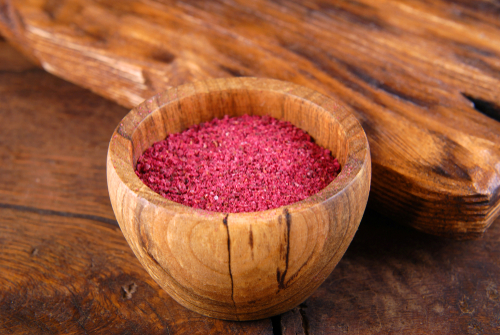
What it is and how it’s used: Sumac is a deep red spice made from the ground berries of the sumac bush. It has a bright, tart, and lemony flavor without the harsh acidity of lemon juice. Sumac is usually sprinkled over rice, grilled meats, and salads—like the classic shepherd’s salad, çoban salatası. It’s also a key ingredient in spice blends like za’atar.
The best substitute: The closest and easiest substitute is lemon zest. Zesting a fresh lemon will give you that citrusy tang without adding extra liquid to your dish. For every teaspoon of sumac, use one teaspoon of finely grated lemon zest or lemon juice with black pepper. You can also add a tiny pinch of salt to round out the flavor.
Pomegranate molasses (Nar Ekşisi)

What it is and how it’s used: This thick, dark syrup is made from reduced pomegranate juice. It’s intensely flavorful, with a beautiful balance of sweet and sour notes. Pomegranate molasses is used in salad dressings, stews, meat marinades, and glazes for roasted vegetables, adding a complex kick that is uniquely Turkish.
The best substitute: A combination of balsamic vinegar and a sweetener is your best bet. Balsamic vinegar has a similar tangy depth.
How to make it: For every one tablespoon of pomegranate molasses, mix one tablespoon of balsamic vinegar with one to two teaspoons of honey or maple syrup. Whisk them together until combined. A high-quality balsamic glaze can also work in a pinch.
Turkish yogurt (Süzme Yoğurt)
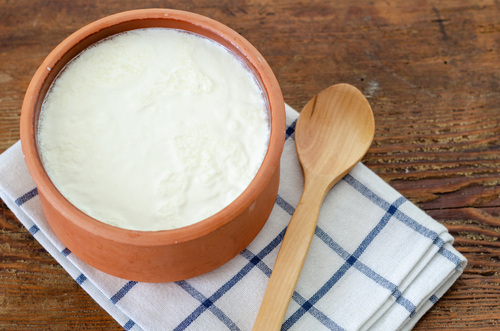
What it is and how it’s used: Traditional Turkish yogurt, typically made from sheep’s milk, is thinner than Greek yogurt but still incredibly creamy. It’s the star of dips like cacık—a cucumber and yogurt dip similar to tzatziki—and is served as a cooling counterpart to spicy kebabs and rich stews.
The best substitute: Full-fat Greek yogurt is an excellent and readily available substitute, with a similar thickness and tang. To get it even closer to the real thing, you can thin the Greek yogurt slightly by whisking in a small amount of water or milk until it reaches a more pourable consistency. A squeeze of lemon juice will also help mimic the traditional bite.
Urfa biber
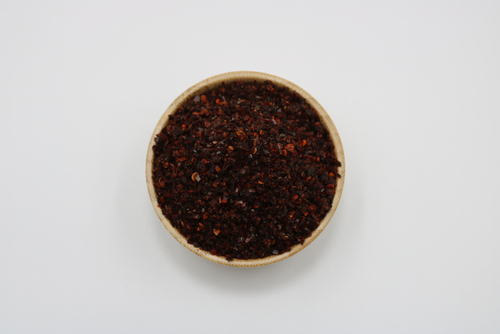
What it are and how it’s used: Urfa Biber are dark, purplish chilli flakes with a smoky, raisin-like flavor and a mild, lingering warmth. It is added to everything from stews to marinades and even eggs.
The best substitute: To mimic the unique flavor of Urfa biber, combine smoked paprika with a pinch of standard red pepper flakes or cayenne pepper. The paprika provides the essential smokiness, while the pepper flakes add the heat. For every teaspoon of Urfa biber, use about ¾ teaspoon of smoked paprika and ¼ teaspoon of red pepper flakes. Adjust the heat to your preference.
Turkish breads (pide, lavash)
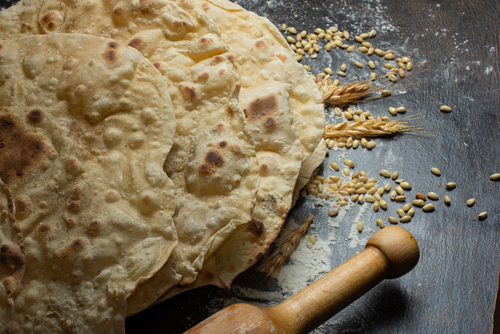
What they are and how they’re used: Freshly baked flatbreads are a cornerstone of any Turkish meal. They are used for scooping up meze, wrapping kebabs, or soaking up delicious sauces. Pide is a thick, fluffy, boat-shaped bread, while lavash is a thinner, softer flatbread.
The best substitute: Good-quality naan or thick, fluffy pita bread are fantastic stand-ins. For the best result, warm them in the oven or a dry skillet for a minute or two before serving. `this will ensure they are soft and pliable.
Bulgur
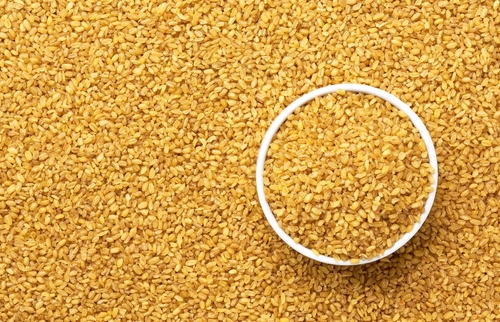
What it is and how it’s used: Bulgur is a whole wheat grain that has been cracked and partially pre-cooked. It’s a nutty, chewy staple in Turkish cuisine, forming the base for pilafs (bulgur pilavı) and salads like kısır, a zesty bulgur salad)
The best substitute: Quinoa or couscous are the most common. Quinoa offers a similar nutty flavor while couscous is lighter and cooks faster, but will provide a similar texture in salads. For pilafs, farro is another excellent, chewy alternative.
Tips for making your substitutions shine
Making a great substitution is about more than just a one-to-one swap. Here are a few tips to ensure your final dish is as flavorful as possible.
Focus on a balance of flavors
Remember the Turkish flavor pillars: tangy, savory, and fresh. If your substitute for pomegranate molasses is a little too sweet, balance it with an extra squeeze of lemon juice. If your dish feels flat, brighten it up with a generous handful of fresh parsley or mint.
Don’t underestimate fresh herbs
If there is one thing that defines Turkish home cooking, it’s the liberal use of fresh herbs. Even if you’re using substitute spices, adding plenty of fresh parsley, dill, and mint will instantly make your dish taste more authentic and vibrant.
When possible, order the real deal online
While substitutes are great, sometimes there is no replacement for the real thing. For spices like sumac and Urfa biber, a small jar ordered from a specialty online retailer will elevate your cooking and can last a long time. Consider it a small investment in your culinary adventures.

How to capture the spirit of Turkish home cooking
Authentic flavor isn’t just about the ingredients; it’s also about the approach and presentation.
The art of the meze platter
One of the best ways to enjoy Turkish flavors is by creating a meze platter. This is a collection of small dishes, both hot and cold, meant for sharing. Arrange some hummus, your substituted yogurt dip (cacık), some olives, feta cheese (a great substitute for Turkish beyaz peynir), and fresh vegetables on a large platter. It’s a social and delicious way to start a meal.
The importance of olive oil
High-quality extra virgin olive oil is the lifeblood of Turkish cooking, especially in the Aegean and Mediterranean regions. It’s used for cooking, dressing salads, and drizzling over finished dishes and meze. Using a good olive oil can instantly make your food taste more authentic.
Presentation matters
Simple touches can make your food feel more Turkish. Serve yogurt on the side of grilled meats or stews. Sprinkle finished dishes with a dusting of your substitute chili flakes and chopped fresh herbs. Serve your meal with warm bread as a centerpiece for the table.
Your kitchen, your Turkish adventure
Cooking authentic Turkish food shouldn’t feel impossible just because you can’t find every single ingredient at your local market. The heart of home cooking has always been about resourcefulness and adaptation, no matter where you are in the world. When you make thoughtful substitutions and focus on the balance of flavors, you can bring the delicious and vibrant spirit of Turkish cuisine right into your own kitchen.
So, pull out that recipe you’ve been planning to try and start experimenting. We’d love to see how you bring the taste of Turkey to life in your home!

FAQs
What spices are essential in Turkish cooking?
Besides sumac and chili flakes, other common spices include cumin, dried mint, oregano, cinnamon, and allspice. Many of these are readily available, depending on the season. If a recipe calls for a complex Turkish spice blend like baharat, you can often find recipes online to create a similar mix from spices you already own.
What’s the best alternative to Turkish tea?
Strong black tea is a perfect substitute. Traditional Turkish tea (çay) is a type of black tea that is brewed to be very strong and served in small, tulip-shaped glasses. To replicate the experience, simply brew a robust English or Irish breakfast tea and steep it a bit longer than usual.
Can I recreate Turkish desserts without specialty ingredients?
Absolutely! While desserts like baklava are famous, you can capture the spirit with simple swaps. For example, you can use store-bought puff pastry instead of hand-stretched filo dough. A simple dessert of fresh figs or apricots drizzled with honey and served with a dollop of yogurt is also a classic Turkish treat.
Is there a good substitute for Turkish coffee?
Turkish coffee is known for its very fine grind and strong, unfiltered brewing method. To get a similar intensity, you can use a dark roast espresso grind, which is much finer than a standard drip coffee grind. While you won’t get the classic sediment at the bottom without an ibrik (a special pot), brewing a very small, strong cup of espresso or using a Moka pot can give you a similarly rich and powerful coffee experience.
The oregano in my pantry tastes different. Why?
You’ve noticed a key difference! The oregano commonly used in Turkish cuisine (Origanum vulgare ssp. hirtum) is often more pungent, spicy, and less sweet than the standard oregano found in many US supermarkets, which can sometimes be closer to marjoram. If your oregano isn’t giving you the strong flavor you want, try adding a tiny pinch of thyme and red pepper flakes to increase its earthy and spicy notes.